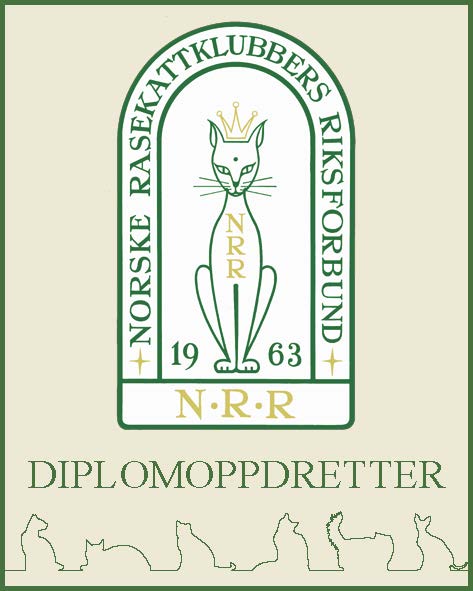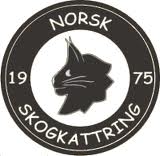 |
Arja |
 |
Siri |
 |
Sira |
 |
Klara Klok |
 |
Varg Viljesson |
 |
Eirlys Glädja |
 |
Missed |
 |
The Norwegian Forest Cat |
 |
The cattery |
 |
Index |
 |
|
|
|
 |
Forest Grimalkin becomes Norway's proud pedigreed cat! |
We do not know how long it has been stalking the Norwegian forests, or even when it first approached people and joined the ancient tribes in their wanderings. But we know that it has adapted to the harshest climate on the farthest northern reaches of Europe. Like a small but beautiful version of the lynx, the Norwegian Forest Cat is part of Norway’s fauna. For many of us Norwegians, it is the faerie cat we chance upon while out in the wilderness. Proud – yes, of course, - and with a good deal in it that is still wild, yet not aggressive and quite prepared to be affectionate. Yes, there is still something wild in its watchful gaze, alert, all-seeing; its triangular head with the square profile; its elegant ears with the long, lynx-like tufts that seem all of a character with ancient, shaggy spruce and lichen-covered pine; its body, lithe and muscular, ready to meet any challenge that comes its way; its slender legs and strong thighs for the speed to streak away or the strength to climb to the very top of the tallest tree; its bushy tail, waving triumphantly over everything and everyone; and its fur, two layers, thick and warm, at its fullest an impressive sight. The forest cat’s inner fur is covered with a long, smooth, pendent outer coat that can be best compared to a protective shield. It stops water from penetrating to its inner fur and skin and thus enables the cat to shrug off downpours, snow and gales, and to cope with temperatures that may drop to thirty or forty degrees C below zero. A fantastic, natural cat we recognized long ago as Norway’s national cat, and our purebred Norwegian Forest Cat. Back in the thirties, people were already discussing the idea of recognizing the breed. The war put a stop to all that, but, come the fifties and sixties, the idea was dusted off again. With the foundation of the Norwegian National Association of Pedigreed Cats in 1963, recognition for the forest cat was a matter of pride for its president, Carl-Fredrik Nordane. The members of the Breeding Council at the time recall how they went out to see two kittens at the Oslo home of Else and Egil Nylund. They had heard of a fine, red forest cat, but the tears nearly came to their eyes when they saw the brown and white tigerstriped Truls, a glorious specimen who became the first prototype of the Norwegian Forest Cat breed. Gradually, a group of enthusiasts became involved in breeding the cats: the Norwegian Forest Cat Circle was founded in 1975 and the Norwegian Forest Cat was provisionally recognized in 1976. Then came the trial by fire – the general assembly of the FIFe in Paris, November 1977. While the whole world of Norwegian Forest Cat sat tense and trembling at home, Carl-Fredrik Nordane and Arvid Engh went to Paris as delegates of the NPCA, and showed Tom B. Jensen’s splendid pictures of Truls and other forest cats – the smiling faces and waving Norwegian flags tell the rest of the story. Hurrying from the spectators’ bench, Helen Nordane wired back to Norway and the same evening Truls was the main story on the Norwegian Television. The newspapers followed with broad coverage. The Norwegian standard of excellence was recognized from the start and has been the yardstick ever since, with slight modifications in 1987 and a few new characteristics in 1993. The cats are judged by type, not colour, even if gradually they are being sub-divided into groups for show purposes. The first world pedigree cat championship were held in Munic in 1991, and the winner was a Norwegian Forest Cat, by the name of Flatland’s Bjørnstjerne. The breed has become incredibly popular in recent years. Norwegian Forest Cats are often the main breed shown at Norwegian and Swedish shows, and there is a large and growing interest on the continent: Norwegian Forest Cat have their own associations in most European countries. Finally, there are more and more Forest Cats in North America; and South America and Australia are following. Today there are Norwegian Forest Cats in most countries around the globe. Not bad for a natural cat from the deep forest – where, despite everything, it still does best!
|
|
|||||||||||||||||
